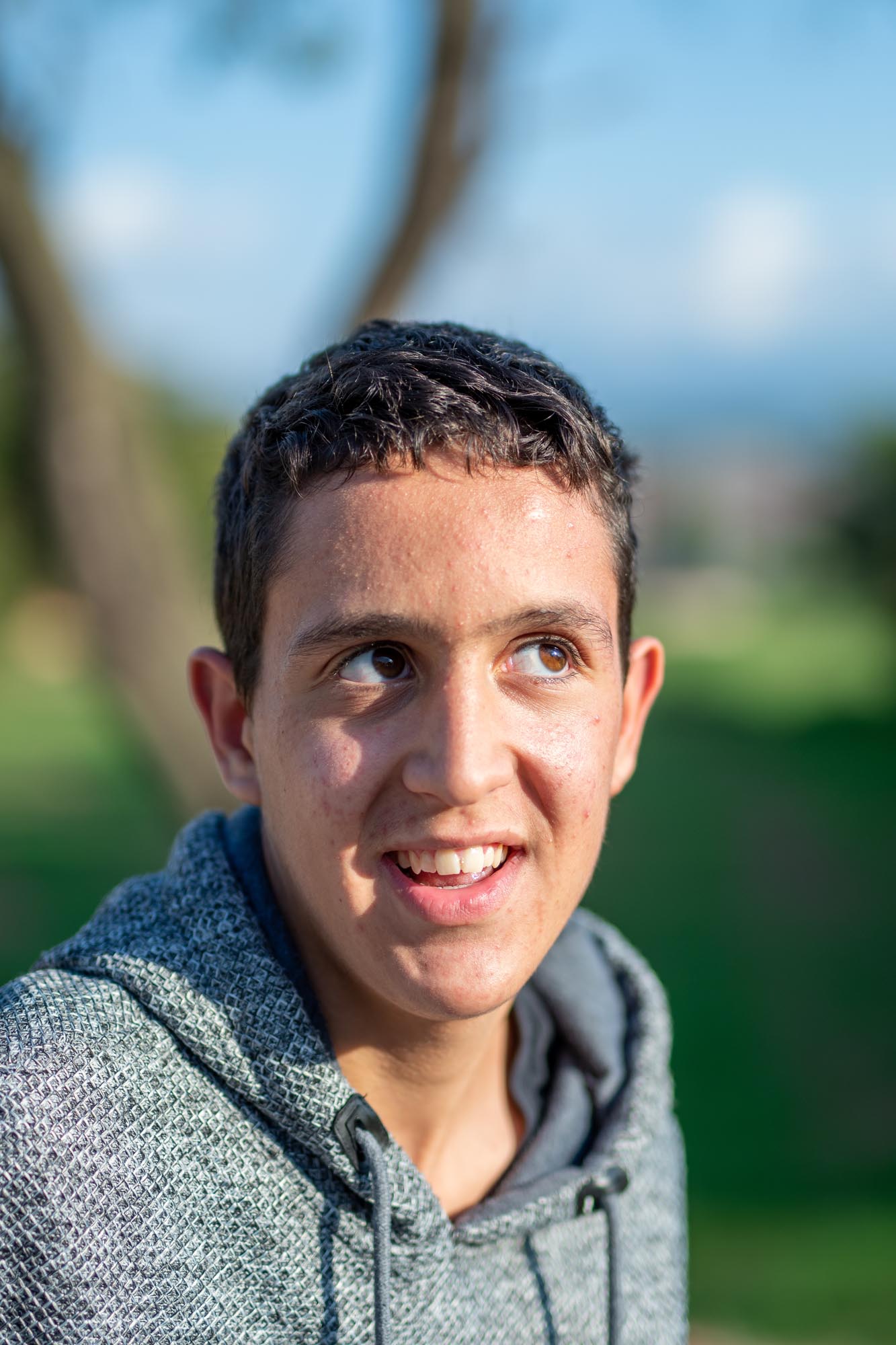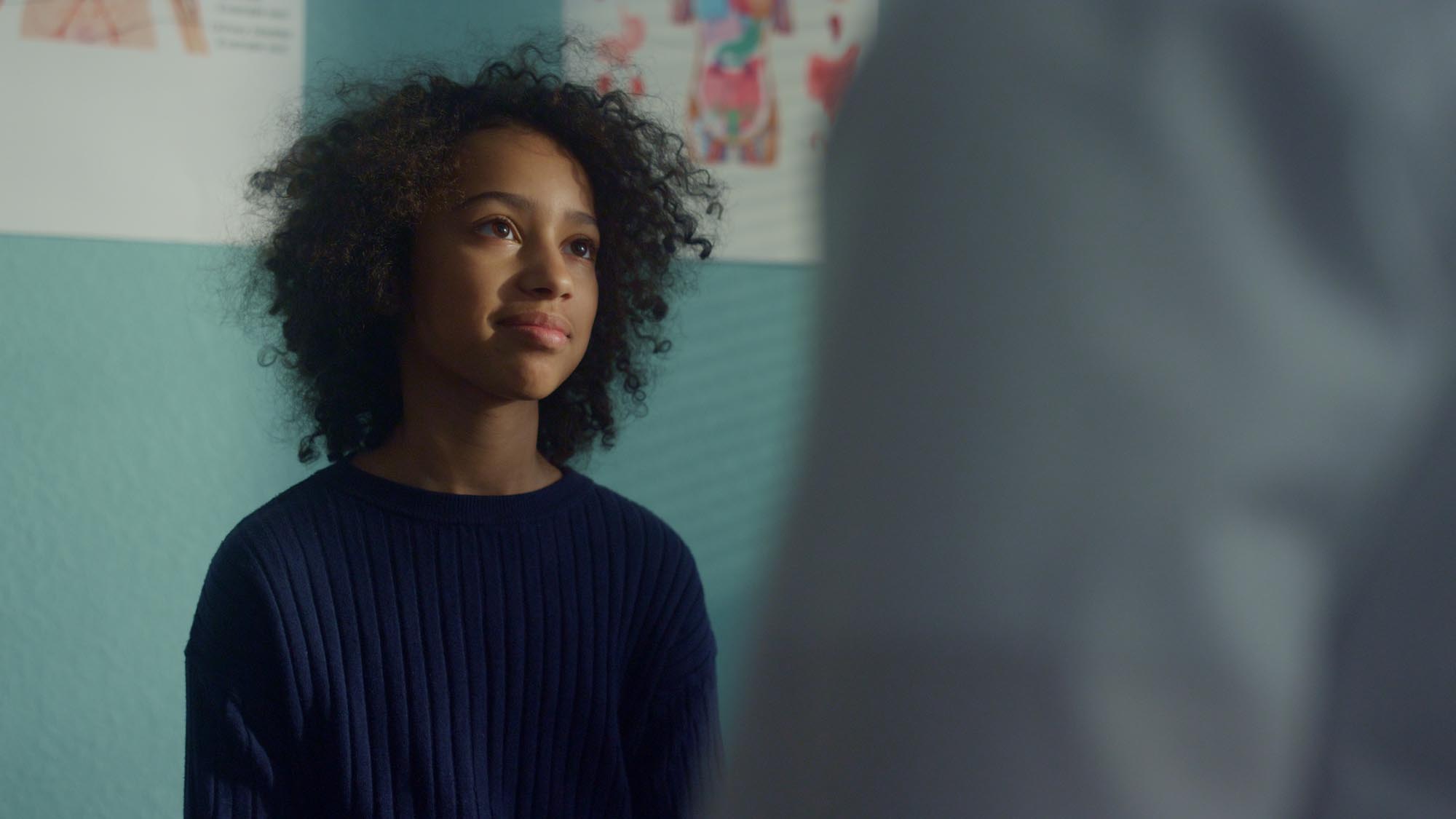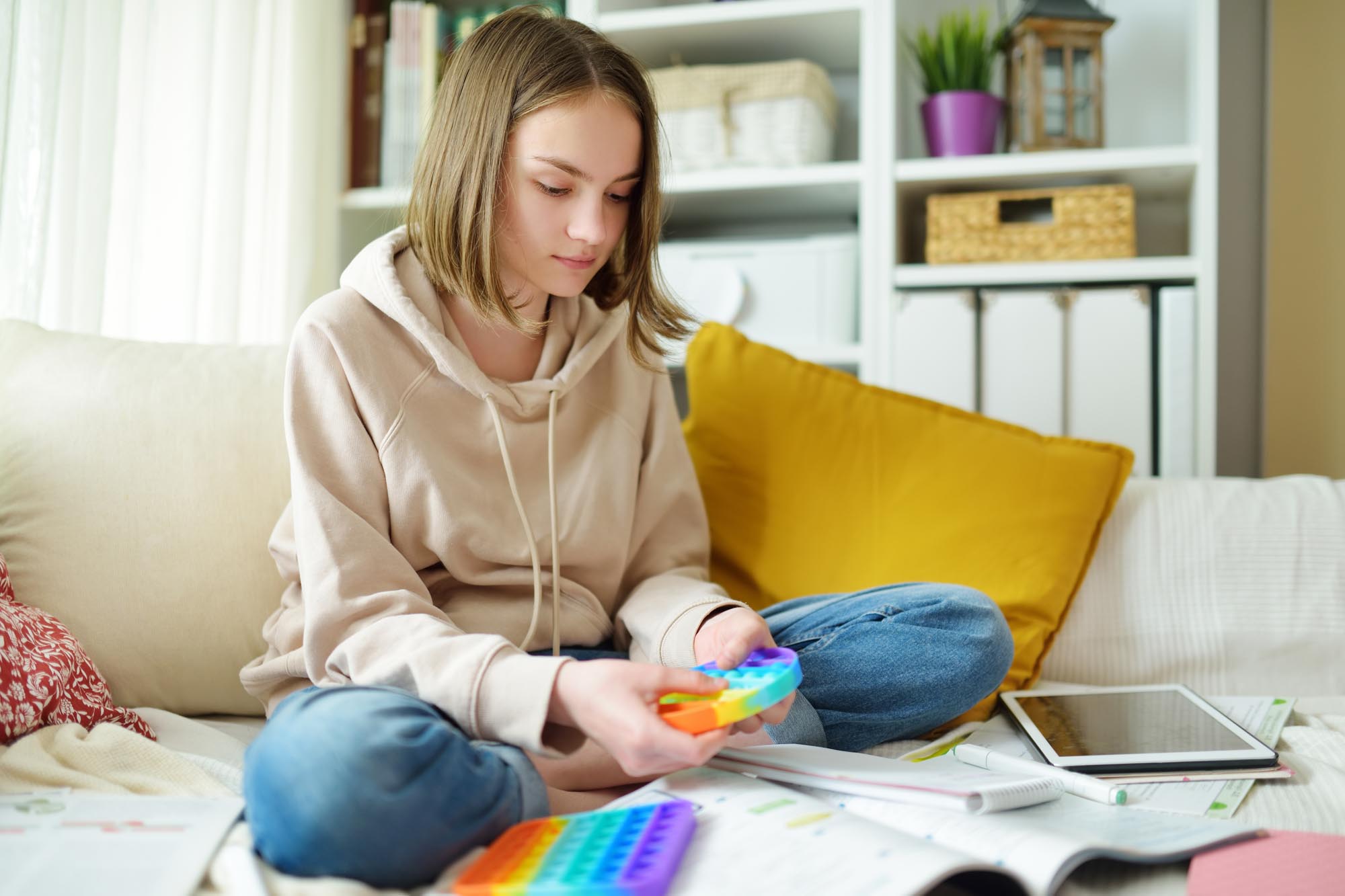Teen Autism
Watching your teen navigate the world with autism can feel overwhelming, isolating, and at times, deeply uncertain. At Build Bright Care Group, we’re here to help you make sense of what your child is experiencing—and, more importantly, how they can move forward with confidence and support. Based in Los Angeles, California, our residential treatment program offers compassionate, individualized care for adolescents on the autism spectrum, blending clinical expertise with a warm, structured environment where your teen can thrive socially, emotionally, and academically.
Find out if your insurance will cover the cost of treatment.
Teen Residential Treatment for Teen Autism
Understanding and Supporting Your Teen With Autism
At Build Bright Care Group, we understand how overwhelming it can be for families navigating Autism Spectrum Disorder (ASD) during the teenage years. Adolescence can already be a complex stage, and when autism is present, it may come with additional challenges that require compassion, patience, and specialized support.
Autism in teens can affect communication, social interaction, emotional regulation, and daily functioning. While these challenges may vary in intensity, early identification and consistent intervention are key in helping your teen grow, connect, and reach their full potential.
We believe that with the right support, teens with autism can thrive socially, emotionally, and academically.
What Is Autism Spectrum Disorder (ASD)?
Autism Spectrum Disorder (ASD) is a neurodevelopmental disorder characterized by difficulties in social communication and interaction, along with restricted repetitive patterns of behavior, interests, or activities.
Autism presents differently from one teenager to another. Some teens may communicate easily and perform well in school, yet still struggle with social cues, anxiety, or sensory sensitivities. Others may need more support with daily routines, emotional regulation, or building independence. Every teen has their own strengths and challenges, and no two experiences are the same.
In some cases, autism may be harder to recognize — especially in girls, who may learn to “mask” or hide their difficulties in social situations. This can sometimes delay diagnosis or support. Autism is not caused by parenting, and it’s not something a teen will simply “grow out of.” But with the right support, teens with autism can learn skills to help them connect with others, manage emotions, and navigate daily life with greater confidence.
Symptoms of ASD are present in early childhood but may not become fully manifest until later or can present differently during adolescence. Every teen with autism is different — some may need minimal support, while others may benefit from more structured, intensive services. Understanding how Autism Spectrum Disorder presents in teens can help you, as a parent, identify when it’s time to seek extra support.
Common Signs of Autism (Autism Spectrum Disorder) in Teens:
Autism can show up in many different ways during the teen years. While every adolescent is unique, there are some common signs that may indicate your teen is on the autism spectrum. These signs often relate to how they connect with others, manage emotions, and respond to the world around them.

Social and Communication Differences in Teens With Autism
Teens with autism often experience the world of social interaction differently. These challenges are not about unwillingness to connect — rather, they reflect how the teen processes communication, relationships, and social cues. Possible signs include:
Difficulty reading or understanding social cues
Trouble making or maintaining eye contact
Preferring familiar or structured conversations
Interpreting language literally
Struggling in group conversations
Appearing socially withdrawn or choosing solitude
Finding it difficult to initiate or sustain friendships
Challenges with turn-taking in conversation
May seem socially “offbeat” or out of sync with peers
These differences don’t mean a teen doesn’t care about others — in fact, many teens with autism feel very deeply but may struggle to express empathy in typical ways. With support and understanding, they can build strong, meaningful relationships and learn strategies to navigate social life more confidently.
Repetitive Behaviors and the Need for Routine in Teens With Autism
Repetitive behaviors and a strong need for routine are hallmark traits of autism. These behaviors can serve many purposes — from offering comfort and predictability to helping a teen regulate their emotions or sensory experiences. While they may seem unusual to others, these actions are often how an autistic teen feels safe and in control in a world that can feel overwhelming or unpredictable. Common signs may include:
Difficulty with transitions or sudden changes in routine
Engaging in repetitive physical movements
Repeating certain words, sounds, or phrases
Becoming highly distressed or anxious when routines are disrupted
Arranging objects in specific patterns or sequences
Fixating on patterns, order, or symmetry
Deep, focused interest in specific topics
Watching the same video, movie scene, or clip repeatedly
Showing a strong preference for sameness in daily life
Using rituals or routines to feel calm
These behaviors aren’t about being stubborn or difficult — they’re often a way for teens to manage stress, sensory input, or uncertainty. Recognizing and honoring these patterns can help caregivers create a more supportive and understanding environment.
Emotional Challenges in Teens With Autism
Emotions can feel intense, confusing, or even overwhelming for many autistic teens. They may struggle to recognize what they’re feeling or how to express it in a way that others understand. At the same time, it can be just as difficult for them to read emotional cues in others, like facial expressions, tone of voice, or body language, which can lead to misunderstandings or frustration in relationships. These emotional challenges are not a lack of caring or empathy. Often, teens with autism feel emotions very deeply but have difficulty translating those feelings into words or managing them in the moment. Common emotional signs may include:
Difficulty identifying or labeling emotions
Emotions often felt as physical sensations
Increased anxiety or stress
Frequent mood swings
Challenges with emotional regulation
Delayed emotional responses
Difficulty understanding others’ emotions
Shutting down emotionally or appearing “flat” when overstimulated
Masking emotions in social settings
It’s also common for autistic teens to experience co-occurring mental health conditions, such as:
- Anxiety disorders
- Depression
- ADHD (Attention-Deficit/Hyperactivity Disorder)
- Obsessive-compulsive tendencies
- Emotional dysregulation that can sometimes mimic or overlap with other conditions
Understanding that these emotional differences are part of how your teen’s brain processes the world can bring compassion into tough moments. With proper support, teens with ASD can learn to better understand their emotions, communicate their needs, and develop healthy coping strategies.
Sensory Sensitivities in Teens With Autism
Many autistic teens experience the world through a heightened — or, at times, dulled — sensory lens. Their brains may process sensory input differently, leading to stronger reactions to lights/sights, sounds, textures, tastes, smells, or movement. These sensitivities can affect daily life in subtle or dramatic ways, and often influence behavior, mood, and comfort in certain environments. Common sensory-related signs may include:
Strong reactions to certain sounds
Sensitivity to light
Aversion to certain textures
Discomfort with certain smells or tastes
Avoidance of certain environments
May under-react to sensory input
Seeking out specific sensory input to feel calm or regulated
Engaging in repetitive sensory behaviors
Becoming overwhelmed or “shutting down” in overstimulating environments
These sensitivities are not just preferences — they’re real neurological experiences that can shape how your teen navigates the world. When parents and caregivers recognize and accommodate these needs, it can greatly reduce stress and increase a teen’s ability to engage in school, relationships, and daily routines.
Thinking and Processing Differences in Teens With Autism
Teens on the autism spectrum often have unique cognitive styles — meaning they may think, learn, and solve problems in ways that differ from their peers. These differences aren’t deficits, but they can create challenges in school, social situations, and everyday life if misunderstood. Understanding how your teen processes information can make a huge difference in reducing frustration (for both of you!) and building effective strategies that play to their strengths. Common thinking and processing traits may include:
Rigid or “black-and-white” thinking
Struggles with flexible thinking
Tends to focus intensely on details
Strong memory for facts, patterns, or routines
Needs extra time to process verbal instructions
Prefers clear, step-by-step directions
Can become overwhelmed by multitasking or unfamiliar situations
May interpret language very literally
While these thinking styles can create challenges in fast-paced or unpredictable environments, they also come with strengths, like attention to detail, strong memory, and deep focus. When given the right tools and support, teens can thrive by building on these strengths and learning strategies for flexibility and self-regulation.
School Challenges in Teens With Autism
Many teens with autism are highly intelligent, curious, and capable learners — but traditional school settings often aren’t designed with their needs in mind. As a result, even bright students may struggle with daily academic demands, not because they lack ability, but because their learning style and sensory needs are different. Recognizing these school-related challenges can help parents better support their teens’ success, self-esteem, and overall well-being. Common school-related difficulties may include:
Trouble organizing assignments, managing time, or keeping track of deadlines
Difficulty understanding abstract ideas or open-ended questions
Preferring factual, literal information
Needing clear, step-by-step instructions
Struggling with transitions between classes or shifts in school routine
Hyper-focusing on one area of interest
Avoiding classroom participation
Being easily distracted by sensory input
Taking teacher feedback literally
Feeling overwhelmed in academic settings
When these struggles go unrecognized, teens may start to view themselves as “bad students” or lose confidence in their abilities. With the right support — including accommodations, understanding educators, and individualized strategies — many students with autism can thrive academically and rebuild their self-esteem in the process.
Sleep, Hygiene, and Daily Living Challenges in Teens With Autism
Many teens with ASD face everyday challenges with daily routines like sleep, hygiene, and self-care — not due to laziness or defiance, but because of how their brain processes sensory input, transitions, and internal cues like hunger, fatigue, or discomfort. Understanding and supporting these daily living needs can reduce family stress and build your teen’s independence and self-esteem over time. Common difficulties may include:
Trouble falling or staying asleep
Irregular sleep-wake cycles
Sensitivity to the sleep environment
Avoidance of hygiene routines
Needs frequent prompting or reminders
May have difficulty recognizing internal cues
Struggles with time management
Becomes overwhelmed by multi-step tasks
These challenges are often frustrating for both teens and caregivers, but they are also very common — and they’re not a reflection of your teen’s motivation or intelligence. With patience, structure, and support (like visual schedules, sensory accommodations, or step-by-step coaching), teens can make steady progress in developing these life skills.
Technology Use and Screen Time Regulation in Teens With Autism
Technology can be a powerful outlet for teens with autism — offering comfort, predictability, and even a sense of connection. Whether it’s video games, YouTube, online forums, or social media, many teens on the spectrum are naturally drawn to screens. For some, digital spaces feel safer and more manageable than face-to-face interactions. While screen time can offer benefits, such as stress relief or special interest exploration, it can also lead to challenges with balance, boundaries, and emotional regulation. Common patterns or concerns may include:
Hyperfocus on video games or online content,
Resistance or meltdowns when asked to stop or transition away from screens
Using technology to retreat from social stress, boredom, or emotional overwhelm
Becoming deeply attached to specific content
Difficulty recognizing when screen use is excessive
Increased irritability, anxiety, or emotional dysregulation after extended time on screens
Social challenges online
Screens aren’t inherently bad — in fact, they can be a great tool when used intentionally. But helping your teen learn balance and boundaries with technology is key. Support might include setting clear routines, offering structured alternatives, co-viewing content, or using timers and visual cues to ease transitions. Supporting healthy screen use isn’t just about restriction — it’s about helping your teen develop the emotional and executive functioning skills they need to self-regulate, shift attention, and feel in control of their time..
Interoception: Understanding Internal Awareness in Teens With Autism
Interoception is the sense that helps us understand what’s happening inside our bodies — such as hunger, thirst, pain, temperature, or emotional cues like nervousness or excitement. For many teens with autism, this sense may be either under-responsive or over-responsive, and in some cases, inconsistent. This can make it harder for teens to regulate their physical needs and emotions, or may cause them to feel overwhelmed by bodily sensations that others might not even notice. Signs of interoception differences may include:
Not noticing when they’re hungry, full, tired, or need the bathroom
Overreacting to minor sensations
Hyperfocus on body sensations
Difficulty describing how they feel physically
Underreacting to pain or injury
Becoming emotionally dysregulated without warning
Misinterpreting normal bodily signals as distressing
These interoceptive differences can affect daily routines, health habits, and emotional well-being. Some teens may seem unaware of their body’s needs, while others may become preoccupied with small changes in how they feel physically — both are valid experiences rooted in how the brain processes internal signals. With support and practice, teens can learn to better understand and respond to these cues, building interoceptive awareness and confidence.
Severity Levels for Autism Spectrum Disorder Include:

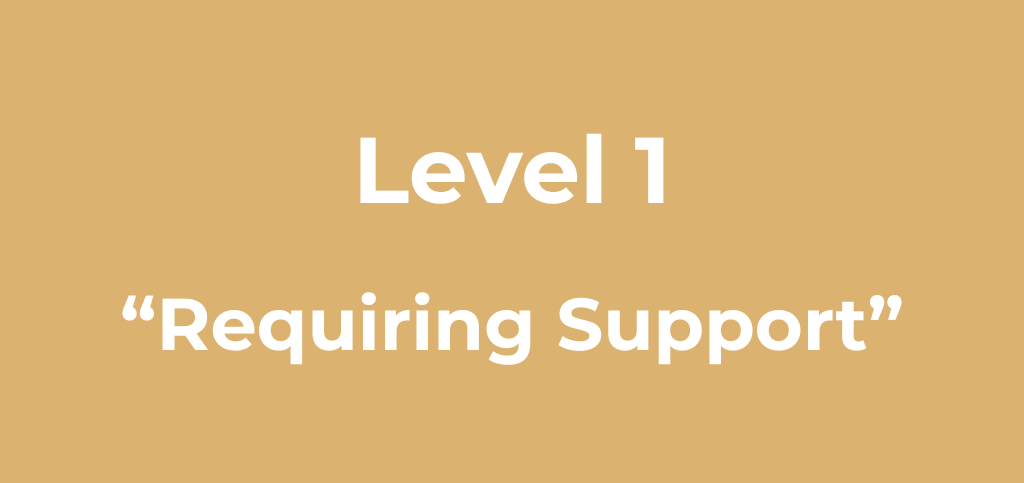
Social Communication:
Teen shows noticeable difficulty initiating or sustaining social interactions. There may be trouble with back-and-forth conversation, reduced interest in social connection, and challenges adapting communication to different social contexts. Support may be needed to help them engage more effectively, especially in group settings.
Restricted, Repetitive Behaviors:
Inflexibility interferes with functioning across settings. The teen may resist changes in routine, struggle with planning or organization, and display noticeable difficulty switching tasks. Repetitive behaviors are present but may be subtle or only disruptive in more demanding situations.

Social Communication:
Teen has marked deficits in verbal and nonverbal communication skills, even with support. They may speak in short phrases, have limited social reciprocity, or appear noticeably awkward or disengaged in interactions. Social difficulties are clear to casual observers.
Restricted, Repetitive Behaviors:
Behavioral rigidity and resistance to change are more apparent and occur frequently. The teen may have difficulty coping with transitions, show distress with unexpected changes, and rely heavily on routines or preferred activities. Repetitive behaviors are frequent and interfere with daily functioning.
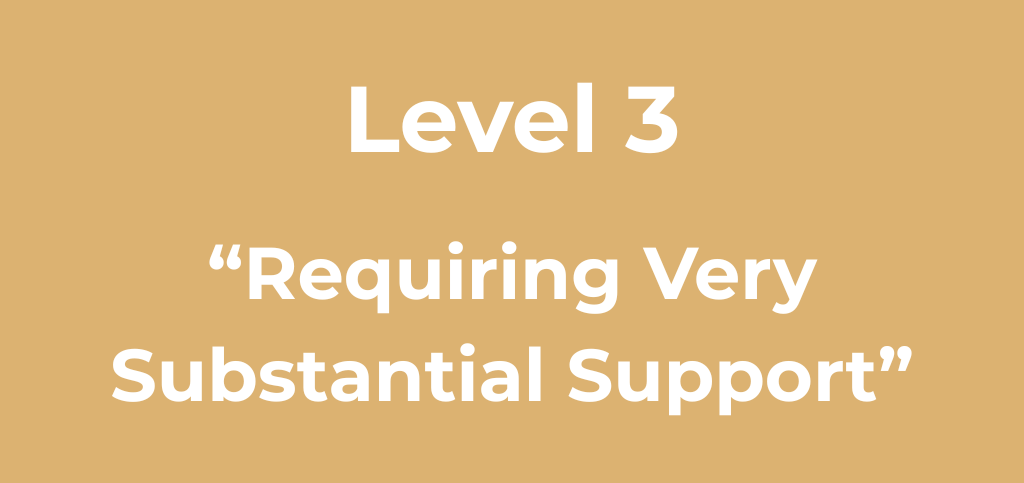
Social Communication:
Severe difficulties in social communication, with very limited verbal or nonverbal skills. The teen may use few words or gestures and have minimal ability to initiate or respond in social situations. Communication is significantly impaired, even with high levels of support.
Restricted, Repetitive Behaviors:
Inflexibility is extreme and highly disruptive. The teen may become visibly distressed by small changes and have a strong need for sameness. Repetitive behaviors (e.g., hand-flapping, vocalizations, intense fixations) are prominent and interfere across all areas of life.
Common Co-occurring Conditions in Teens With Autism
Autism Spectrum Disorder (ASD) often occurs alongside other mental health, developmental, or learning conditions — known as co-occurring or comorbid conditions. Some of the most common conditions include:
Anxiety Disorders
Depression
ADHD (Attention-Deficit/Hyperactivity Disorder)
Obsessive-Compulsive Traits or Disorders (OCD)
Oppositional Defiant Disorder (ODD)
Learning Differences
Tic Disorders or Tourette Syndrome
Consequences of Undiagnosed or Unsupported Autism
When autism goes unrecognized or unsupported, it can lead to challenges that extend into adulthood. Potential long-term effects may include:
Persistent social difficulties
Increased risk of anxiety or depression
Low self-esteem and poor self-image
Academic underachievement or school avoidance
Difficulty transitioning to adulthood
Increased risk of being bullied or socially exploited
Emotional outbursts, shutdowns, or mental health crises
Increased vulnerability to substance use or risky behaviors
Higher risk of suicidal thoughts or behaviors
Residential Treatment for Teens With Autism: A Holistic Approach
At Build Bright Care Group, we specialize in supporting teens with Autism Spectrum Disorder (ASD) and co-occurring mental health challenges — including anxiety, depression, emotional dysregulation, and patterns of self-harm or repeated hospitalizations. Our residential program is designed for adolescents who need a safe, structured, and deeply supportive environment to heal, grow, and reconnect with their strengths.
A Personalized and Relationship-Driven Experience
With a low staff-to-client ratio and a capacity of only six teens at a time, our program offers individualized attention in a calm, home-like setting. This allows our team to form deep therapeutic relationships and tailor care to meet each teen’s specific needs. We don’t just treat behaviors — we uncover what’s underneath them. By identifying and responding to sensory sensitivities, we help teens learn body-based regulation skills. We know that emotional dysregulation often begins at the sensory level. When teens learn to calm their bodies, they become more equipped to connect, learn, and thrive.
Whole-Person, Strength-Based Care
What sets Build Bright apart is our commitment to holistic, integrated care that nurtures the mind, body, and spirit. We support teens as whole individuals — not just a diagnosis — and create a safe, affirming space where they can grow.
Preparing Teens for Real-Life Success
Beyond symptom management, we help teens build the confidence and skills they need to thrive in the real world. Our independent living curriculum teaches everyday competencies like meal planning, budgeting, time management, self-advocacy, and applying for jobs or higher education.
Our Comprehensive Adolescent Care for Autism, Includes:

Individual therapy
Family therapy
Group therapy
Psychiatric services
Medication management
Mindfulness
Journaling
Coping skills groups
Yoga
Addictions & use of technology groups
Music therapy
Art assisted therapy
Physical fitness
Life skills groups
Surf therapy
Outings & recreational activities
School & IEP support
Get to Know Build Bright


Our Program
We're changing lives with our creative program, sparking innovation and empowering individuals along the way.

Our Approach

When Should You Consider Residential Treatment?
We help you determine the right time for residential treatment consideration.
Frequently Asked Questions
Would my teen with autism benefit from residential treatment?
At Build Bright Care Group, we specialize in identifying and supporting the sensory and emotional regulation challenges that are often at the root of these struggles. Many teens with autism become overwhelmed not because they are defiant, but because their nervous systems are overstimulated or misunderstood. In our structured, calm, and sensory-informed environment, teens learn to better understand their bodies, reduce distress, and build the tools they need to regulate themselves and engage with the world more successfully.
Our small, individualized setting allows us to go deeper than surface-level behavior management — we support the whole person, helping teens build confidence, connection, and lasting emotional resilience.
What makes Build Bright different from other autism programs?
Do you help with school planning and educational needs?
Do you provide services for teens with autism and co-occurring conditions?
What severity levels of autism do you treat at Build Bright?
Our residential program is best suited for teens diagnosed with Level 1 (Requiring support) or Level 2 (Requiring substantial support)— those who may need support with emotional regulation, sensory processing, social connection, or co-occurring mental health challenges, but who are also able to participate meaningfully in therapy, daily routines, and group activities.
All potential admissions begin with a thorough screening process and family consultation, where we explore whether Build Bright is the right fit for your teen — and whether our environment is the right match for their unique needs. Because of the highly relational and therapeutic nature of our program, teens must be verbal and able to engage in the social and emotional components of our care model. We understand that every young person is different, and we approach every inquiry with openness, respect, and honesty — always with your teen’s best interest in mind.
If we determine during the screening process that our program may not be the best match for your teen’s current needs, we’ll let you know with compassion and honesty. Our priority is making sure your child receives care in an environment where they can truly thrive. When possible, we’ll offer referrals or recommendations to help guide you toward programs or resources that may be more aligned with your teen’s profile and goals. You’re not alone — and we’re here to support you in finding the right path forward.
Do you accept health insurance?
Teen Autism Treatment Blog
Navigating the mental health journey of teens with neurodivergence can feel overwhelming for many parents. Whether your child has been diagnosed...
Earlier this month, Build Bright Care Group had the profound honor of attending the Autism Health Summit 2025 — a powerful, parent-driven conference...

